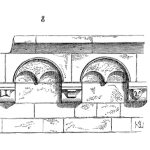
Dear friends, Institute of Quality and Reliability (IQR) is happy to release this first video in our series on statistical process control charts. In the video, Hemant Urdhwareshe, Director of IQR and Fellow of ASQ explains criteria for selection of control charts, and has illustrated how to plot X-bar and Range chart using Microsoft Excel with an application example. Hemant has also explained briefly the interpretation rules to detect special causes. The video is little long but request viewers to watch it till end for best viewing experience.
[Read more…]





